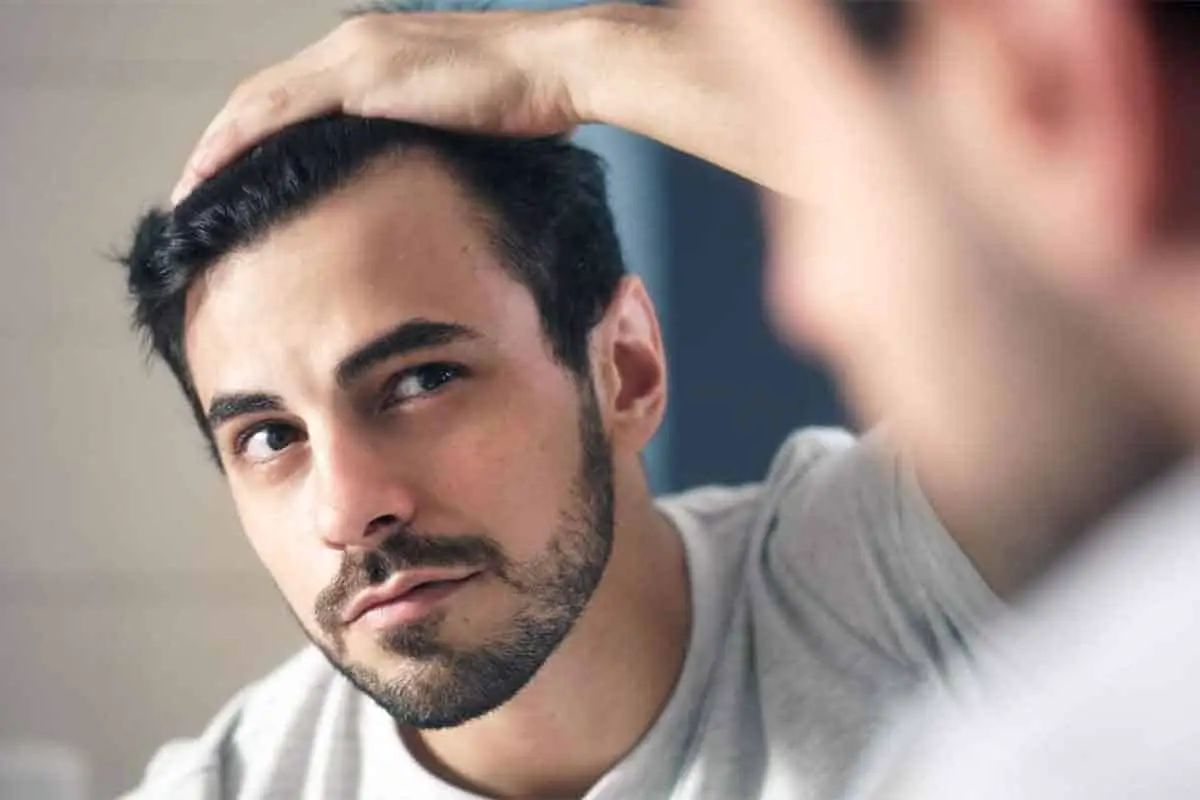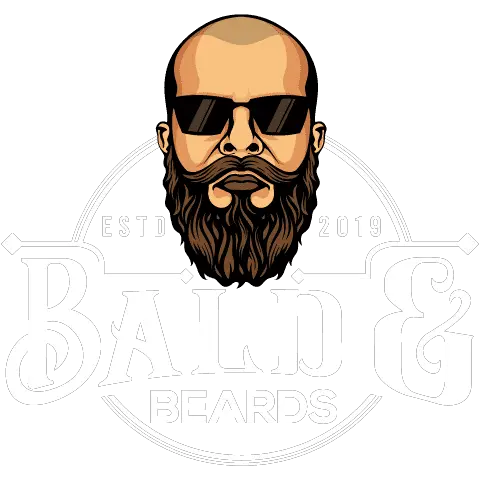You’re not alone if you’re concerned about hair loss. Many men and women worry about their hairline as they mature looking for treatments like Propecia to help with growing hair.
Propecia® (Finasteride), is an FDA approved prescription drug for preventing hair loss. Although it’s not considered a cure for male pattern baldness, it has been proven to stop hair loss and even help regrow hair.
Furthermore, studies found that finasteride is safe for most patients, but there are instances where patients experienced side effects like sexual dysfunction. The benefits and issues are all explained in-depth in our guide (below), and we’ll answer the real question. Does this medication prevent hair loss? Keep reading.
What is Propecia AKA Finasteride?
Finasteride is sold under the brand names Propecia and Proscar. Finasteride was created to help men suffering from male pattern hair loss or androgenic alopecia. Most marketing materials suggest that daily use of finasteride can prevent hair loss in men.
Finasteride was created to help men suffering from benign prostatic hyperplasia (BPH) as well as androgenic alopecia. BPH is also known as an enlarged prostate that causes difficulty in urination and higher frequency to urinate at night. Finasteride helps with treating enlarged prostates, but it’s also used to prevent hair loss in men.
So How Does it Work?
As a Food and Drug Administration approved hair loss treatment, finasteride can block the enzyme called 5-alpha-reductase. This enzyme can then change testosterone to help with prostate problems and grow hair in men suffering from hair loss. In addition, finasteride increases levels of testosterone in the body, allowing the prostate to reduce in overall size and increase hair follicle growth on the scalp.
This medication can work long-term as long as you take it daily. Once you stop taking the medication, hair loss will increase. In addition, you must have a doctor’s prescription in order to take finasteride. It’s only available as an oral treatment in tablet form.
Does Finasteride Prevent Hair Loss
Multiple studies show that finasteride works. In fact, it works so well that most men suffering from hair loss start finasteride at 1 mg per day. It has been proven to decrease DHT levels by 70 percent, which is the hormone responsible for androgenic alopecia.
Clinical trials show the drug works in 66 percent of cases, but it may take up to two years of treatment to see hair growth.
In addition, 83 percent of those patients report that the treatment maintained their hair growth after two years. Men typically experience new hair growth on the mid and crown region, adding new thickness.
Can it Regrow My Hair?
However, men do report that Finasteride also increases the shedding of hair during the first 90 days of treatment. Doctors and studies reassure that this is a sign that the medication is actually working, and patients should not stop the treatment if they notice more hair shedding during the first six months of treatment.
After five years of treatment, 90% of male patients experienced regrowth and hair thickness, halting their hair loss completely. In one study, it was proven that hair counts went up to 277 hairs per one-inch circumference at the end of the five-year phase as well.
The study also found a 34 percent increase in hair weight. A placebo was used to compare to patients taking the course of finasteride during the study, which took place over 96 weeks.
Benefits of Finasteride
The main benefit is that it works for hair loss! This hair loss medication has been on the market for decades, but its effectiveness has improved over the years. There are other benefits to taking finasteride, specifically for older men who have enlarged prostate problems.
Here are the main benefits of this hair loss medication:
- Halts hair loss
- Significant hair regrowth
- Increase in hair thickness
- Ease of urination (for those who have BPH)
Unfortunately, not all effects of finasteride are positive. While side effects of finasteride at a low dose are not popular, men do report some problems, especially if they are susceptible due to genetic and health issues.
Problems with Finasteride
One of the main side effects of finasteride for hair loss includes sexual dysfunction, even after discontinuing usage. Before taking finasteride, patients must consult with a doctor to see if you qualify for the medication.
In some men predisposed to prostate cancer, finasteride is not recommended due to the high risk of developing cancer. Tests may be performed to ensure that it’s safe for you to take finasteride.
Some reasons high-risk patients may not be eligible include:
- Liver disease
- Abnormal liver function
- Prostate cancer
- Bladder muscle disorder
- Structure of your urethra
- Urination problems
- Allergies to dutasteride, also called Avodart
In addition, finasteride usage by women seems inconclusive, and can cause adverse effects if even absorbed into the skin of pregnant women. Finasteride has been associated with birth defects if the mother was exposed to the tablet during pregnancy.
List of Finasteride Side Effects
Many use the prescription as a preventative for baldness and promote hair regrowth, but there are side effects. In addition, men often wonder if the drug will work once male pattern baldness has set in.
While the question is still out on Trump’s hair routine, finasteride has been known to work by decreasing the conversion of testosterone hormone to dihydrotestosterone (DHT). By doing so, this medication is designed to prevent androgenic alopecia.
Studies reveal finasteride is successful at regrowing hair after patients suffered androgenic alopecia, but there are side effects and other complications that may not be ideal for patients. In these cases, hair transplants, scalp micropigmentation and other options offer suitable alternatives to attaining thick, lustrous hair.
Always Consult a Doctor
Before taking this medication, it’s important that you speak to a doctor. If you notice any signs of nipple discharge, lumps, pain, or other changes to your chest, then you should also seek immediate consultation with a doctor.
Here are some known side effects of finasteride:
- Impotence, erectile dysfunction, not being able to orgasm
- Abnormal ejaculation
- Swelling in hands and feet
- Tenderness and swelling in breasts
- Feeling weak or dizzy
- Faintness
- Runny nose
- Skin rash
- Fatigue
- Skin rash
As mentioned previously, the main problem with finasteride is that 6% of patients reported sexual dysfunction. While it’s rare with a 1 mg daily dosage, many patients experience lower libido and are not able to achieve an erection. They may also have problems with ejaculation, and they may not be able to produce sperm.
However, most patients report that once the medication was stopped, their sex drive and sexual functions returned to normal. While not all patients have these issues, patients also report that erectile dysfunction and ejaculation problems continued, which led them to need medication like Viagra to correct their libido and sexual dysfunction issues.
Cost of Finasteride Prescriptions
While costs depend on your insurance coverage and medical provider, finasteride, as a brand name, typically costs between $40 and $50 per a 30-day dosage. There are alternatives, such as a generic finasteride tablet called Proscar.
However, these tablets are quite a bit larger and may be broken down or cut down into fifths to achieve a 1 mg dosage per day. In this way, you may be able to get a 14-month supply for less than $200.
Should You Take it for Hair Loss?
Many have speculated if actor Bradley Cooper is taking Propecia to prevent balding. So, whether you’re famous or an “Average Joe”, getting yourself a prescription may be a good option worth exploring.

Your doctor is the best resource to understand the answer to this question. However, many studies report that men do not suffer any side effects from taking finasteride and that it actually works for as long as you take the medication. More on this later…
First Signs of Thinning Hair
While statistics show that men start to experience hair thinning in their 20s and 30s, you may not need to take finasteride if you simply have a maturing hairline. However, hair loss could also be a sign of testosterone problems, in which case finasteride may be the answer.
Signs of male pattern baldness must be assessed first to know if you actually need to prevent hair loss. If you notice significant bald patches or have experienced complete hair loss around your crown, then starting a regimen of finasteride may be the right course of action.
If you have a risky genetic history with a predisposition to certain cancers, liver disease, and other problems, doctors may recommend other medications or treatments for hair loss.
Alternatives to Finasteride
If all of this sounds scary or you are not approved for finasteride, there are some other alternatives.
Hair Transplant Surgery
With a hair transplant surgery, follicles are transferred from your back or back of your scalp to areas where you’re experiencing hair loss. You can create a new hairline and achieve the same thickness of hair as when you were young.
However, with grafting and surgical costs, this procedure is not always for those on a budget. You typically pay $3 per follicle graft, and you’ll likely need over 1,000 grafts with multiple procedures required to complete the surgery.
Topical Hair Foams and Sprays
There are other ways of achieving hair regrowth. For example, your doctor may recommend Minoxidil, which is available over the counter. It’s most well known as Rogaine.
While it’s known to work in a moderate percentage of patients, topical foams also have to be applied multiple times per day to be effective. It has been difficult to track and study the effectiveness of these foams.
Low Level Hair Restoration Laser Therapy
A new laser hair treatment called Low Level Laser Therapy or LLLT is now being used to help men who suffer from androgenic alopecia. This procedure uses a medical-grade laser to stimulate blood flow back to follicles all over your scalp.
Some patients report it stops their hair loss. Doctors say that it helps by bringing more oxygen and nutrients to your scalp. In addition, LLLT has been known to cause phototherapy, which is a process that increases cellular activity. Studies have been inconclusive whether LLLT works for everyone.
Verdict: Does Propecia Work to Prevent Balding?
Finasteride may be just the thing to regrow your hair and prevent hair loss, even at the early signs of balding. Studies have shown that Propecia works in most patients and results prove it works for men of all ages.
While there are some risks, your doctor will run tests before prescribing finasteride to clear you first. In many cases, finasteride is the first line of defense against baldness, and if you have insurance that covers your prescription costs, it never hurts to go to your doctor to talk about your options.


